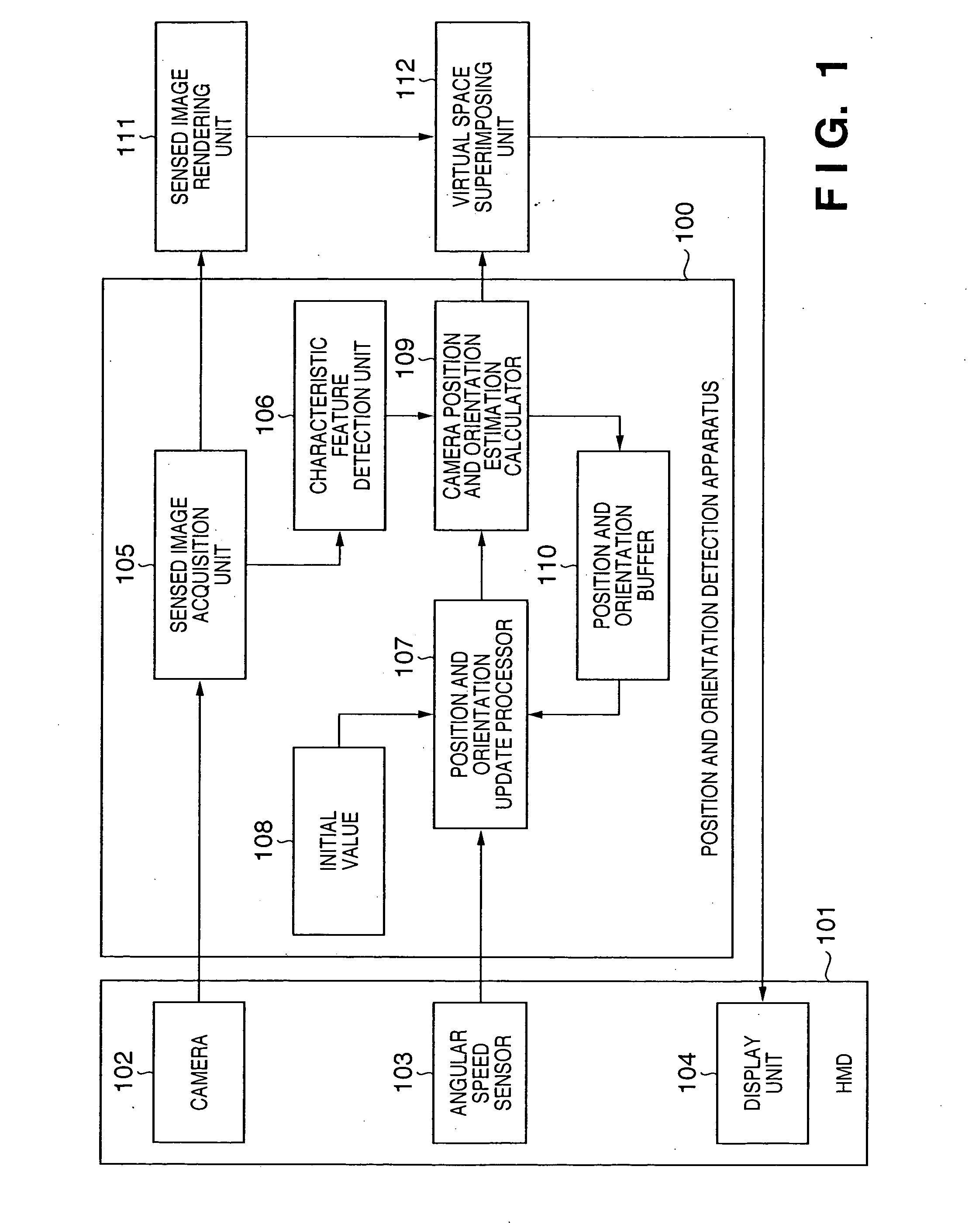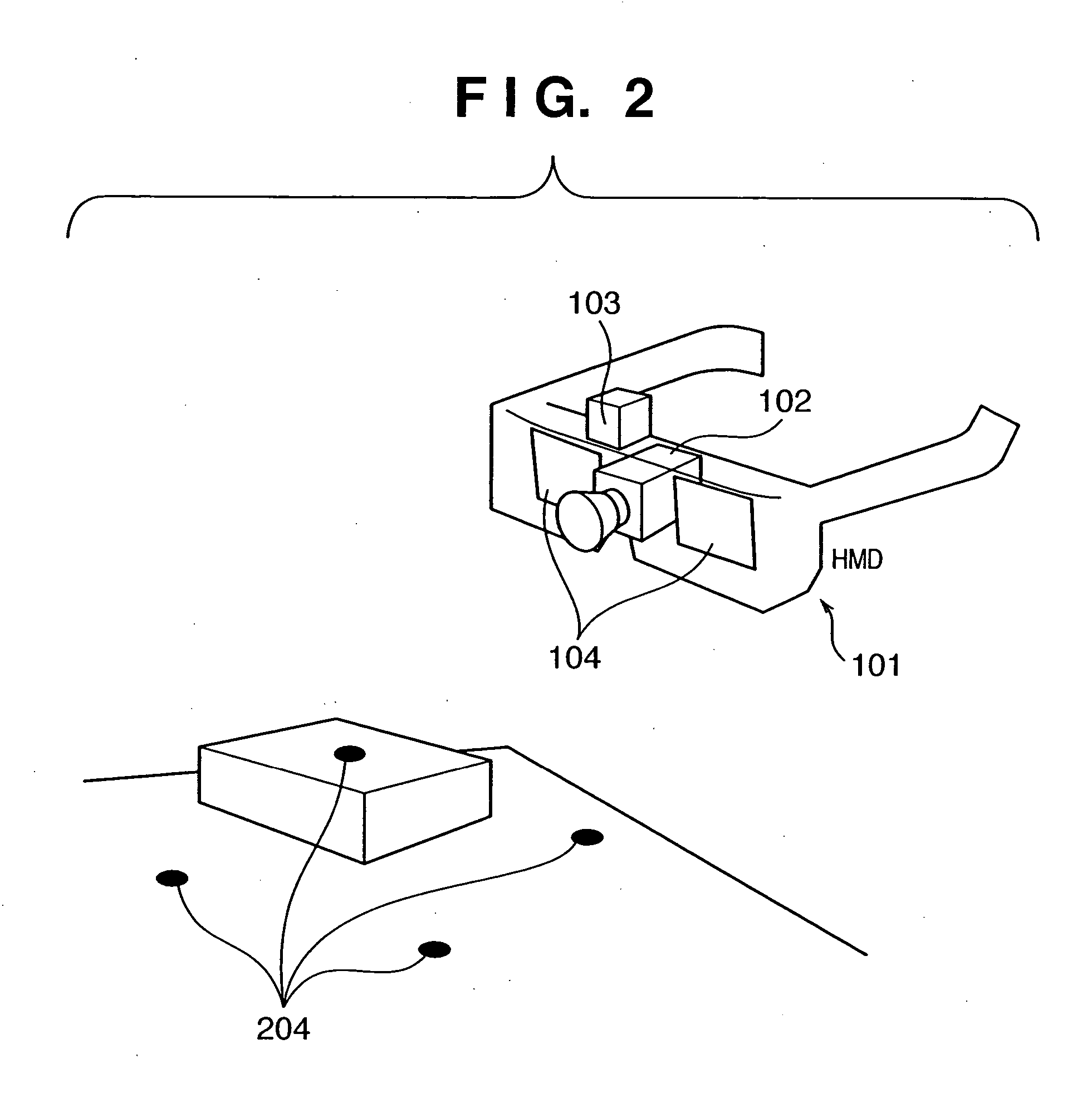Position and orientation detection method and apparatus
a technology apparatus, applied in the field of position and orientation detection technique, can solve the problems of inability to track, inability to obtain position and orientation, and dramatic change in the position of indicators, and achieve the effect of simplified configuration and high accuracy detection results
- Summary
- Abstract
- Description
- Claims
- Application Information
AI Technical Summary
Benefits of technology
Problems solved by technology
Method used
Image
Examples
first embodiment
(First Embodiment)
FIG. 1 shows the functional configuration of a case in which a position and orientation detection apparatus 100 according to the present embodiment is adapted to a Head Mounted Display (HMD) 101. The HMD 101 has a camera 102, an angular speed sensor 103 and a display unit 104, and can be moved through real space. The camera 102 senses the real space and outputs signals expressing a sensed image to a sensed image acquisition unit 105. The angular speed sensor 103, based on vibration gyro and other principles, detects the angular speed of movement of the HMD 101. The display unit 104 is a display unit capable of displaying an image, and is typically constructed of two display units, one for the right eye and one for the left eye.
It should be noted that although the present embodiment employs a HMD 101 of which the positions of each of the camera 102, the angular speed sensor 103 and the display unit 104 are fixed, provided that the positions of the camera 102 and t...
PUM
 Login to View More
Login to View More Abstract
Description
Claims
Application Information
 Login to View More
Login to View More - R&D
- Intellectual Property
- Life Sciences
- Materials
- Tech Scout
- Unparalleled Data Quality
- Higher Quality Content
- 60% Fewer Hallucinations
Browse by: Latest US Patents, China's latest patents, Technical Efficacy Thesaurus, Application Domain, Technology Topic, Popular Technical Reports.
© 2025 PatSnap. All rights reserved.Legal|Privacy policy|Modern Slavery Act Transparency Statement|Sitemap|About US| Contact US: help@patsnap.com



